Inside the Star Wars Empire
Inside the Star Wars Empire
A Memoir
Bill Kimberlin


An imprint of Rowman & Littlefield
Distributed by NATIONAL BOOK NETWORK
Copyright 2018 Bill Kimberlin
Lucasfilm, the Lucasfilm logo, STAR WARS and all related characters, names and indicia are trademarks of & copyright Lucasfilm Ltd. All rights reserved., or their respective trademark and copyright holders.
All rights reserved. No part of this book may be reproduced in any form or by any electronic or mechanical means, including information storage and retrieval systems, without written permission from the publisher, except by a reviewer who may quote passages in a review.
British Library Cataloguing in Publication Information available
Library of Congress Cataloging-in-Publication Data available
ISBN 978-1-4930-3231-0 (hardcover)
ISBN 978-1-4930-3232-7 (e-book)
 The paper used in this publication meets the minimum requirements of American National Standard for Information SciencesPermanence of Paper for Printed Library Materials, ANSI/NISO Z39.48-1992.
The paper used in this publication meets the minimum requirements of American National Standard for Information SciencesPermanence of Paper for Printed Library Materials, ANSI/NISO Z39.48-1992.
Printed in the United States of America
We know the pharaohs well, but not the men who built their tombs.
Anonymous
Foreword
I was one of those names on that endless list of credits at the close of blockbuster movies. From Star Wars to Star Trek, Back to the Future to Forrest Gump, Roger Rabbit to Schindlers List, Saving Private Ryan to Jurassic Park , from Gangs of New York to others I sometimes forget, I was one of those interminable people thanked as Oscars are collected by dazed winners, clutching that surprisingly heavy gold statue as they try not to leave out anyone that helped them.
I was an employee at Lucasfilm, and not an especially important one. The supervisors of projects like my boss, Ken Ralston, or Dennis Muren and many others were the stars. I did, however, work at Lucasfilms Industrial Light and Magic (ILM) for twenty years, and ran a department for almost a decade.
This book is not a history of ILM or Lucasfilm, nor is it a biography of George Lucas. It represents my own personal views and experiences from a life in the movie business and is told in a narrative of vignettes that, like a script, sometimes flash either forward or back.
When I started at Industrial Light and Magic, the receptionist answered the phone saying, Lucasfilm. Later that changed, but I refer to them both interchangeably in this book. Also, when I write we I mean the company, which may or may not include myself.
Bill Kimberlin, California, 2016
Mrs. Hickman
My first few weeks were a blur of the new, and I had to get used to the ILM system. I worked as an editor in Special Visual Effects. It was our job to layer up shots, like making Dagwood sandwiches. Backgrounds, star fields, spaceships, monsters, explosions, actorswhatever the script called for. We worked off guides called storyboards. These were drawings showing the contents of the scene and the action expected. Every department had walls lined with hundreds of these cartoonlike visuals. Each one had a sequence title, like Space Battle, and a scene number. Every day thousands of feet of motion picture film would arrive, either from the six large shooting stages at Elstree Studios in Great Britain, where the full-size Millennium Falcon was parked, or from any of the other more exotic locations around the world.
For the special effects shots we didnt use ordinary movie filmwe used the huge images produced by an all-but-dead Hollywood format called VistaVision. Each frame was four times the size of a regular movie film frame, which gave us a tremendous advantage in retaining quality in the extensive duplicative processes we used to create the impossible.
During the years when television was threatening to take away the Hollywood moviegoing audience, all the major studios fought back with something that television could not compete with: wide-screen formats such as Cinerama and VistaVision. George rounded up the old cameras and projectors so he could shoot, project, and edit VistaVision right alongside the standard cameras.
George differed from the rest of Hollywood in that he not only made movies, but also wanted to advance the technology. Hollywood wasnt interested in investing in better equipment and methods. Their attitude was that if someone came up with something useful, they would just buy it. George, on the other hand, was developing a completely new electronic editing system and a better sound system for theaters, and was taking the early steps toward digital cinema.
We worked ten-hour days and fifty-hour weeks. These were all union jobs except for the executives, producers, and clerical staff. That meant you were paid a minimum of at least ten hours a week of overtime beyond your normal salary. Unlike the current high-tech world, we got paid for our endless hours. As the number of calendar days to the movies release shrank, we would begin working six days a week and then seven, clocking dozens of hours of overtime and sometimes even double time. Also, at least in the early days, every workers family shared in all the special Saturday screenings of the films we worked on and all of the gifts and lavish holiday parties, as well as the organic Thanksgiving turkeys that were handed out each year by the truckload.
Perhaps more than any of this was just the feeling that you belonged to something, something the world thought important. When one of the chief model makers got sick after flying to England with a bad cold that infected his brain, we got bulletins on his condition every morning before dailies, until it was announced that George showed up at the hospital and was on the case. It was as if one were now part of a wealthy familya third cousin at best, but still a part.
We laughed on seeing any new executive arrive all dressed in a suit and tie. That never lasted long. The poor guy would look around, see George Lucas in a flannel shirt and jeans, and quickly decide he was overdressed. Also, the executives were a little afraid of us. We knew how to make movies and they didnt. Their jobs depended on how well we did ours. We called them the green carpet boys, as the front office was the only place in our building that had any carpet. My building, Building D, was basically a warehouse with tilt-up walls and roll-up doors that had been severely modified over the years to accommodate our needs.
Everything we did was done in secret. It had to be. The world at that time was crawling with Star Wars fans. Our buildings had no signs that would indicate who we were or what we were doing. The front door had lettering that said The Kerner Company. Optical Research Lab. We left the sign as a kind of puzzle. We were located on Kerner Boulevard and we used optical printers for compositing our effects shots. Since one of our printers had been used to open the Red Sea in Cecil B. DeMilles The Ten Commandments, we thought of ourselves as just researching better ways to perform miracles.
We outfitted our crews with signs and T-shirts that had phony film names on them, like Blue Harvest, for our location shoots. People always ask what movie you are shooting, and since we couldnt say Star Wars, we came prepared with cover names, and that seemed to satisfy them.
Still, people showed up, having driven clear across the country just for a glimpse of anything related to their passion for the movies we made. One fan even entered our reception area and inquired suspiciously about the sign on our door, What do you actually do here? To which our resident former Marine replied, We manufacture and test rectal thermometers.
Next page
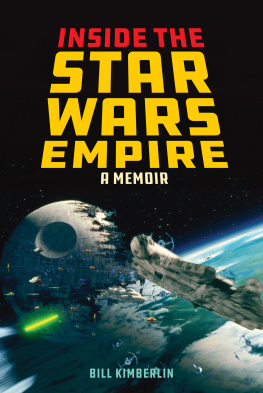


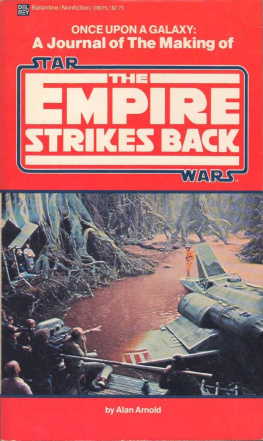


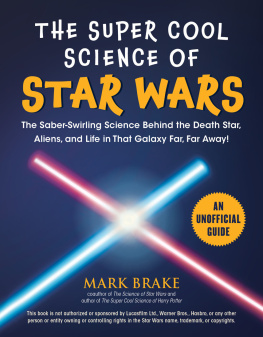
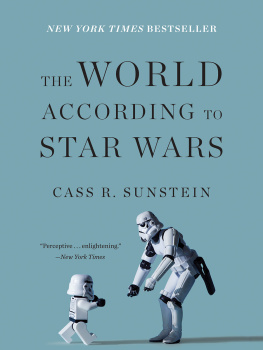
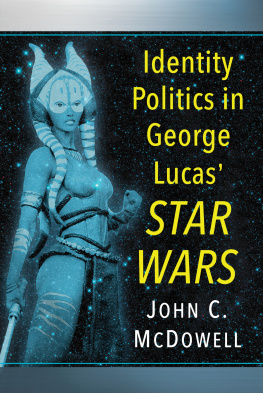

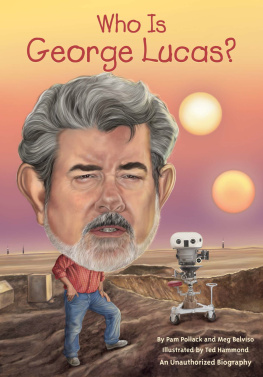


 The paper used in this publication meets the minimum requirements of American National Standard for Information SciencesPermanence of Paper for Printed Library Materials, ANSI/NISO Z39.48-1992.
The paper used in this publication meets the minimum requirements of American National Standard for Information SciencesPermanence of Paper for Printed Library Materials, ANSI/NISO Z39.48-1992.